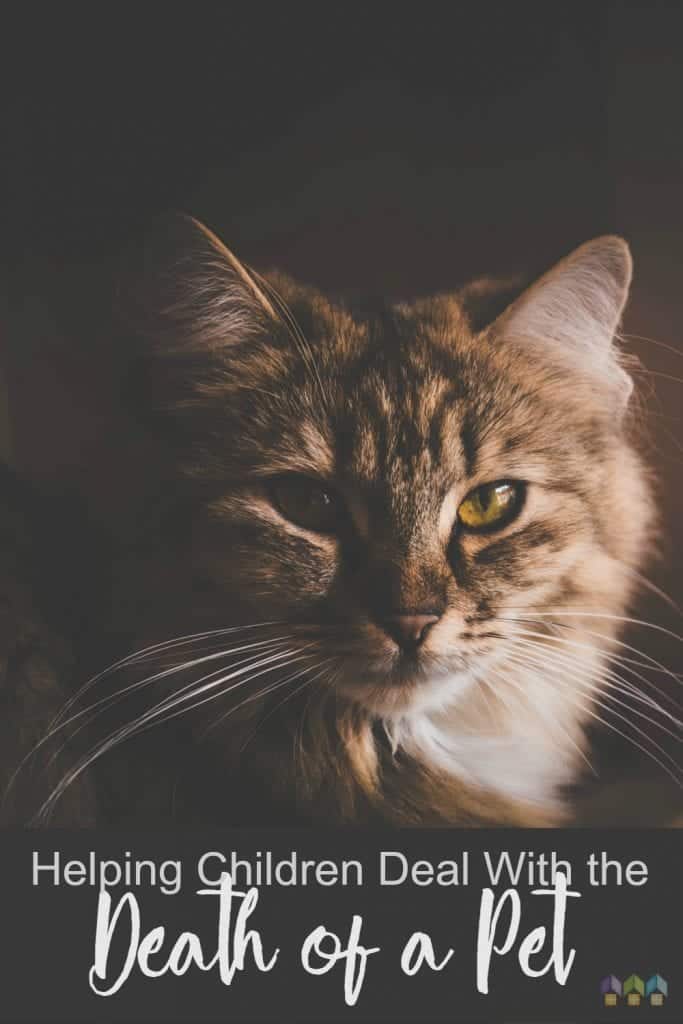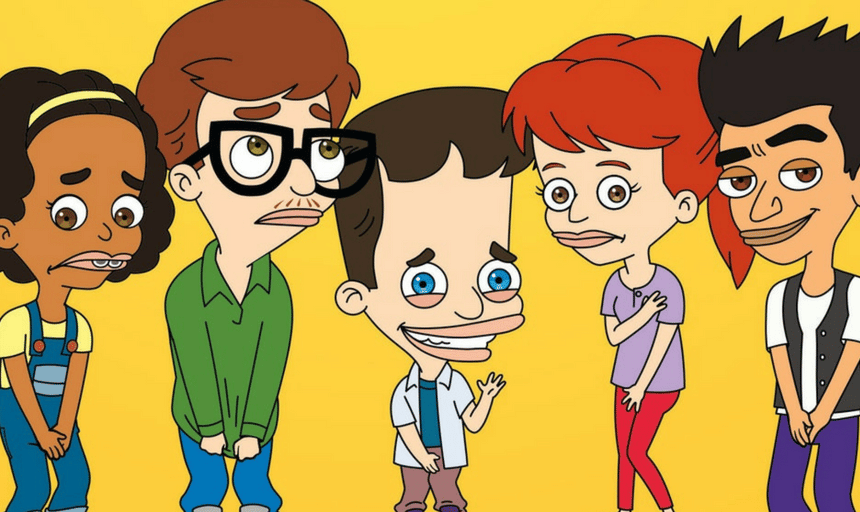Helping Children Deal With the Death of a Pet
A few weeks ago, our 8-year-old cat died. My youngest child, age 11, doesn’t remember life without Tabby. (She was named after the cat in the Mr. Putter and Tabby books.) It was hard for all of us, though, because we all loved her. A few weeks ago, Tabby began to feel bad and just wasn’t acting like her normal self, so we took her to the veterinarian and found that her kidneys were failing. The vet did what he could for her, but in the end she died in spite of the great care she received.

There are several things to keep in mind as a parent if your family pet dies–whether it’s an expected death or not. Of course every family is different, so you should add or change these guidelines as you need to.
- First, if possible, allow your children to say goodbye to the pet. In our case, Tabby was so sick with no hope of recovery that we had no choice but to let her die. To be completely honest, I didn’t want to take my children to say goodbye to her. We had said our temporary goodbyes when we had to leave her at the vet a few days before, and I would have liked to leave it at that. My children, though, wanted to say a final goodbye. Our vet was so extremely wonderful through this process. He gave us a room and allowed us to hold Tabby, pet her, and talk to her as long as we wanted to before he took her back. Of course we all sobbed the entire time we were with her, but it made the children feel much better knowing that we had comforted her and spent her last few hours together.
- Allow the children to bury the pet or be a part of a burial service if they want to. I would not have forced my children to have a burial service for Tabby, but this is another thing they very much wanted to do for her. After Tabby died, the vet allowed us to take her body home with us (in a box) to bury. The children chose a spot close to our house in a shady area where they can visit her grave any time they want to. My 11-year-old daughter, Mary Grace, made a nice little gravestone (a paving stone that she decorated) to put on top of the grave to keep other animals from bothering it. We all watched and talked about Tabby as my husband dug a place large enough to bury her. We all cried some more. Mary Grace put Tabby’s favorite toy in the box with her before we buried her, and she sprinkled flowers on top of the box too. After Tabby was buried, she placed the paving stone on top of the ground over the grave.
- My children are older (ages 18, 17, and 11), so this wasn’t an issue for us, but if you have younger children be sure not to say that the pet was “put to sleep” or that you “lost” the pet. Younger children may not understand that the pet died. Or if they do understand that the pet died, they may think that death is temporary and that the pet will come back if he/she was put to sleep or lost. Children may also feel guilt, thinking that they were responsible for losing the pet. It’s also possible that young children may become afraid of going to sleep at night themselves for fear that they will die like the pet did. For those reasons, I think it’s very important to explain to the children that the pet died and to use the word “died.”
- Make sure your children understand that death is permanent. This may sound harsh or mean, but it’s not. It’s necessary. Young children may not understand that death is permanent. They may think the pet will come back. It’s important to explain in simple words that the pet died and that he/she isn’t alive any more and won’t be alive again.
- Allow your children to talk about the pet and to ask questions, draw pictures, etc. Don’t avoid talking about the pet. Even if you cry or the children cry, this is part of the process when dealing with this kind of loss. It’s not necessary for you to bring up the topic (but you certainly can if you want to or if the situation lends itself to that), but you need to let the children talk about him/her when they feel like it. They may also want to draw pictures of the pet, look at photographs of him/her, or tell others that the pet died. These things are all fine and are a very normal part of the grieving process.
- Let your children see you cry. The children need to know that’s it ok to cry. They need to know that grown-ups cry too. Crying helps them (eventually) begin to get over the sadness.
- Keep in mind that children, especially very young children, may alternate between being fine and being upset or angry. This too is normal. Once the children have had a few minutes of being upset or angry, they may go right back to playing and being happy. That’s perfectly fine and normal.
- Encourage them to talk about their feelings. Talk with your children and allow them to say why they are angry or upset. Don’t make them feel bad about feeling this way. Explain to your children that they won’t be in any trouble for feeling this way either. Encourage them to tell you how they feel and why. Again, very young children may not be able to express why they feel like they do, and that’s ok too.
- Monitor your children over the next few days and weeks. You want to be sure your children are gradually beginning to feel better. Tweens and teens, especially those who struggle with depression and anxiety, may become even more depressed and anxious. Even younger children may have these problems. If you begin to get concerned that your child is still sad and upset several weeks later, you may need to talk to the child’s doctor.
- Decide whether or not to get another pet right away. Some folks think it’s not a good idea to get another pet right away after the death of a pet. I feel like that’s something that should be discussed and agreed on by the whole family. My children were very upset about Tabby’s death, but they wanted to get a kitten right away so our other cat would have a companion. We all agreed that we would still miss Tabby and that the new kitten wouldn’t replace her, but adopting the new kitten gave us something else to think about and enjoy to help the grieving process not feel quite so hard.
Even though dealing with the death of a pet is hard, these tips will help you deal with it in a positive way. You can’t rush the grieving process, but you can help your children get through it.
Have your children gone through the death of a pet? How did you help them cope?








I am so glad to read this article this week. My parents have a 14 year old dog, whom we dogsit periodically through the year (a weekend here, a month there). He is the closest thing that my kids have to a pet. We’ve known for some months now that he is getting older & showing it. This week, he had some new issues, and we’re realizing that his time is limited. I read your article & I’m tucking these thoughts away until needed. Thank you.
Erin, I’m so sorry that you may be losing your parents’ dog soon! Losing a pet is very hard, but it’s a part of life that many of us will deal with at one time or another. We dearly love our pets and are willing to suffer the loss in exchange for the years of joy they give us! I’m glad this article was timely for you. Thank you for your comment. It’s always encouraging for us to hear from readers who are helped or encouraged by what we write. Blessings to your family!